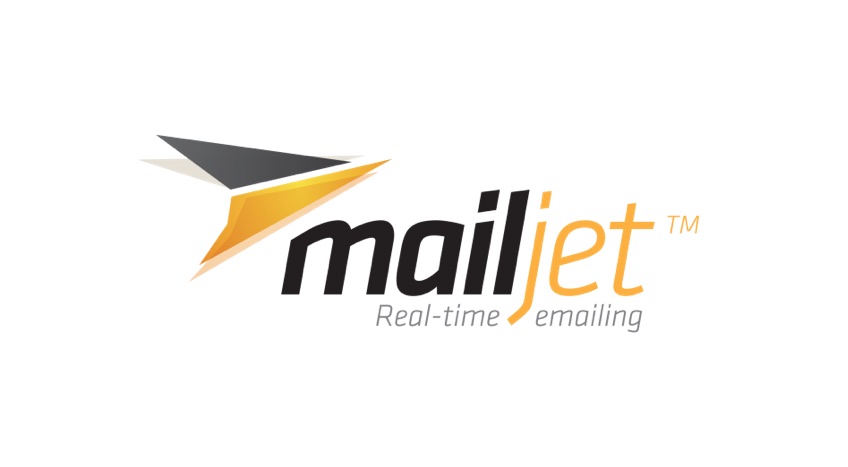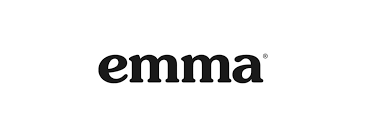In the fast-paced world of email marketing, two platforms have consistently made waves: Mailjet and Emma. As we step into 2024, it’s crucial for marketers, business owners, and digital enthusiasts to understand which tool offers the edge in this competitive arena. Through a detailed, head-to-head comparison, we’ll uncover the strengths and weaknesses of Mailjet and Emma, helping you decide which is the ideal email marketing partner for your needs this year.
| Mailjet | Emma |
|---|---|
 |  |
| G2 Score – 4.0 out of 5 stars | G2 Score – 4.0 out of 5 stars |
| TrustRadius Score – 7.9 out of 10 | TrustRadius Score – 8.6 out of 10 |
User-Friendly Design: The Battle of Interfaces
In today’s digital landscape, the ease of navigating a platform can make or break its success. Let’s dive into how Mailjet and Emma fare in offering a user-friendly experience, an aspect critical to efficiency and productivity in email marketing.
Exploring Mailjet’s Interface
Mailjet is celebrated for its intuitive design. It’s crafted with the user in mind, ensuring that even those new to email marketing feel at home. The dashboard is clean, with a minimalistic approach that prevents information overload. Navigating through the platform is a breeze, with key features like campaign creation, contact management, and analytics easily accessible from the main menu.
The standout feature of Mailjet is its email editor. It employs a drag-and-drop interface that simplifies the process of creating engaging and professional-looking emails. This is particularly beneficial for small business owners or solo entrepreneurs who might not have the luxury of a dedicated design team.
The Emma Experience
Emma, on the other hand, takes a slightly different approach. Its interface is sleek and modern, with a focus on providing a more personalized user experience. One of Emma’s strengths lies in its customizable dashboard that allows users to keep critical metrics and tools front and center.
While Emma’s email builder is also based on a drag-and-drop interface, it goes a step further by offering more advanced design options and customizable templates. This is a boon for users who want more control over their email aesthetics, although it might require a bit more time to master compared to Mailjet’s straightforward editor.
Weighing User Experience
For those who prioritize quick and easy campaign setup, Mailjet’s straightforward interface is a clear winner. Its focus on simplicity and ease of use means less time learning the platform and more time executing effective email campaigns.
Emma, with its slightly steeper learning curve, is ideal for users who seek a balance between ease-of-use and advanced design capabilities. Its customizable nature caters well to businesses with specific branding requirements or those who wish to experiment more with their email designs.
In the realm of user-friendly design, both Mailjet and Emma have their unique appeals. Mailjet is the go-to for simplicity and quick campaign execution, making it a great choice for those new to email marketing or with limited time. Emma, offering greater control and customization in design, is suited for users who want their emails to stand out in a crowded inbox.
Feature Richness: Delving into Capabilities
Beyond the user interface, the depth and breadth of features a platform offers can significantly impact the success of your email marketing campaigns. Let’s compare Mailjet and Emma in terms of their feature sets and see how they equip you for the digital marketing battlefield.
Mailjet’s Comprehensive Toolset
Mailjet comes equipped with a robust array of features designed to enhance your email marketing campaigns. One of its standout features is the advanced segmentation tool, allowing you to tailor your messages to different segments of your audience based on various criteria. This level of customization can significantly improve engagement and conversion rates.
Another area where Mailjet excels is in its automation capabilities. With Mailjet, you can set up automated workflows that trigger emails based on specific actions taken by your subscribers. This feature is a huge time-saver and enables consistent engagement with your audience.
Mailjet also offers strong A/B testing functionality, enabling you to test different versions of your emails to see which performs better. This data-driven approach helps in fine-tuning your email strategies for optimal results.
Exploring Emma’s Feature Set
Emma, while sharing some commonalities with Mailjet in terms of basic features, places a greater emphasis on personalization and analytics. Its personalization tools are advanced, offering dynamic content that can change based on subscriber data. This makes each email feel more personal and relevant to the individual reader.
In terms of analytics, Emma provides detailed reporting on your email campaigns, giving you insights into open rates, click-through rates, and subscriber behavior. These analytics are more than just numbers; they offer actionable insights that can inform your future marketing strategies.
Emma also shines in its integration capabilities, seamlessly connecting with a variety of CRM systems and e-commerce platforms. This integration ensures that your email marketing efforts are in sync with your overall marketing strategy.
Feature Set Showdown
Mailjet is a powerhouse when it comes to segmentation, automation, and A/B testing, making it an excellent choice for marketers focused on efficiency and scalability. Its features are geared towards maximizing engagement and optimizing campaign performance.
Emma, with its advanced personalization and in-depth analytics, is ideal for businesses that want to create more targeted, data-driven email campaigns. Its integration capabilities also make it a strong contender for those looking to create a cohesive marketing ecosystem.
Choosing between Mailjet and Emma in terms of features depends on your specific marketing needs. If you value automation, segmentation, and testing, Mailjet is your go-to tool. For deeper personalization, comprehensive analytics, and integration capabilities, Emma is the better choice.
Pricing and Affordability: Understanding the Cost-Benefit
In a world where marketing budgets are always under scrutiny, understanding the pricing structure and overall value of an email marketing tool is vital. Let’s delve into how Mailjet and Emma stack up in terms of pricing, and what you get for your investment.
| Mailjet | Free Plan: Includes up to 6,000 emails per month (with a daily limit of 200) and unlimited contacts. Basic features like email creation and sending are included. Essential Plan: Starting at around $15/month for 15,000 emails per month. This plan removes the daily sending limit and includes online customer support, no Mailjet logo, and sub-accounts. Premium Plan: Starting at around $25/month for 15,000 emails per month. Includes additional features like segmentation, A/B testing, marketing automation, and multi-user collaboration. Custom Enterprise Solutions: Offers custom volume of emails with advanced features and dedicated support. Pricing is custom and based on specific requirements. |
| Emma | Pricing is typically tiered based on features and list size: Pro Plan: Offers automation, segmentation, and analytics. Pricing usually starts at around $89/month. Plus Plan: Includes additional features like landing pages and A/B testing. Pricing is higher and usually requires a quote from Emma. Enterprise Plan: Custom pricing for advanced needs like custom integrations and dedicated support. |
Mailjet’s Pricing Strategy
Mailjet employs a flexible pricing model, designed to cater to a wide range of needs and budgets. It offers a free plan, which is quite comprehensive for starters and small businesses, providing basic features and a decent monthly email volume. As you scale up, the paid plans increase in features, including higher sending limits and more advanced tools like segmentation and A/B testing.
The scalability of Mailjet’s pricing is one of its strong points. It allows businesses to start small and upgrade as their needs grow, without a significant upfront investment. For small to medium-sized businesses, this progressive pricing model can be particularly attractive.
Emma’s Cost Structure
Emma takes a slightly different approach to pricing. It does not offer a free tier, and its plans are generally geared towards medium to larger-sized businesses. The pricing reflects the advanced features and personalized support that Emma provides, including powerful automation tools and detailed analytics.
While Emma’s pricing might be higher compared to Mailjet, it’s important to consider the value it brings, especially for businesses that are scaling up and require more sophisticated email marketing tools. The investment in Emma can be justified by the advanced capabilities and the potential return on investment through more targeted and effective email campaigns.
Evaluating the Value Proposition
For startups or small businesses with a tight budget, Mailjet’s flexible and scalable pricing model offers a clear advantage. It provides the necessary features to kickstart your email marketing efforts without breaking the bank.
On the other hand, for larger businesses or those with more complex email marketing needs, Emma’s comprehensive feature set and personalized support can offer significant value. The higher cost can be viewed as an investment in a more tailored, sophisticated email marketing strategy.
In the pricing and value comparison, your choice between Mailjet and Emma should align with your business size and needs. Mailjet is more suited for those looking for affordability and scalability, while Emma is ideal for businesses ready to invest more in advanced email marketing capabilities.

Related: Check out our free SEO suite

Customer Support and Accessibility: Ensuring Smooth Operations
The level of customer support and the accessibility of resources provided by an email marketing platform can significantly impact your user experience. Let’s compare how Mailjet and Emma support their users in navigating and maximizing the potential of their platforms.
Mailjet’s Approach to Customer Service
Mailjet places a strong emphasis on providing accessible and responsive customer support. Users have access to a range of support options, including email, live chat, and a comprehensive knowledge base. Especially noteworthy is their responsive live chat, which offers quick solutions to immediate problems.
Furthermore, Mailjet provides an extensive library of tutorials, guides, and FAQs. This self-help resource is particularly useful for resolving common issues and learning how to use different aspects of the platform more effectively. For new users or those with limited technical expertise, these resources can be invaluable in getting up to speed quickly.
Emma’s Customer Support System
Emma, known for its customer-centric approach, offers personalized support that many users find exceptional. Their support team is not just about fixing issues but also about providing strategic advice and best practices for email marketing. This can be particularly beneficial for businesses looking to refine their email marketing strategies.
In addition to traditional support channels like email and phone, Emma offers specialized services such as dedicated account management and professional services for design and strategy. These services go beyond basic support, offering tailored assistance to help businesses make the most of their email marketing efforts.
Assessing Support and Resource Quality
Mailjet’s strength lies in its accessible and comprehensive support, catering well to a broad range of users, from beginners to more experienced marketers. The availability of immediate help through live chat and a rich library of self-help resources make it a reliable choice for users who prefer quick solutions and learning at their own pace.
Emma, on the other hand, excels in providing a more personalized support experience. Its focus on strategic assistance and dedicated services makes it ideal for businesses that seek more than just technical support but also guidance in optimizing their email marketing strategies.
The decision between Mailjet and Emma in terms of customer support depends on the type of support you value most. If you prefer quick, self-service resources and responsive help for immediate issues, Mailjet is a great choice. For more personalized, strategic support and dedicated services, Emma stands out as the superior option.
Analytics and Reporting: Gaining Insightful Data
The ability to track, analyze, and understand the performance of your email campaigns is critical. Analytics and reporting features can provide invaluable insights into subscriber behavior, campaign effectiveness, and areas for improvement. Let’s see how Mailjet and Emma compare in this vital aspect.
Mailjet’s Analytical Strengths
Mailjet offers a comprehensive analytics suite that provides real-time data on key email campaign metrics like open rates, click-through rates, and bounce rates. This information is crucial for understanding the effectiveness of your campaigns and making informed decisions. The platform also includes geographic and device tracking, which can offer deeper insights into your audience’s preferences and behaviors.
A notable feature of Mailjet’s analytics is the ability to track the performance of individual links within emails. This granular level of data is particularly useful for assessing the effectiveness of specific content or calls to action. Additionally, Mailjet’s A/B testing capability allows for testing different email versions to optimize campaign performance.
Emma’s Reporting Capabilities
Emma places a strong emphasis on detailed reporting and analytics. The platform offers all the standard metrics you would expect, but goes further by providing in-depth insights into subscriber engagement and behavior. Emma’s analytics can tell you not just how many people opened an email, but also how they interacted with it, offering data on things like click maps and the duration of engagement.
Furthermore, Emma’s analytics are presented in a highly visual and user-friendly format, making it easier to interpret complex data. This visual approach to reporting can be particularly beneficial for teams that need to share and discuss campaign performance across departments.
Assessing the Data Depth
Both Mailjet and Emma provide robust analytics and reporting features, but they cater to different needs. Mailjet is well-suited for marketers who need comprehensive, real-time data and enjoy delving into the details of campaign performance. Its strengths in link tracking and A/B testing are particularly valuable for data-driven marketers.
Emma, with its focus on user engagement and visually appealing reports, is ideal for businesses that prioritize understanding subscriber behavior in-depth. Its reporting tools are not just about numbers; they provide insights that can inform more effective and engaging email strategies.
In the realm of analytics and reporting, the choice between Mailjet and Emma depends on your specific needs and preferences. If you value detailed, actionable data and enjoy experimenting with campaign elements, Mailjet is a great choice. If you’re more focused on understanding subscriber behavior and prefer visually intuitive reports, Emma is the way to go.
Automation and Workflow: Streamlining Email Campaigns
In modern email marketing, the ability to automate workflows and efficiently manage campaigns can significantly impact the success and scalability of your efforts. Let’s evaluate how Mailjet and Emma perform in terms of automation capabilities and workflow management.
Automation in Mailjet
Mailjet offers a robust set of automation tools that cater to a variety of marketing needs. Its automation capabilities allow you to create workflows that can trigger emails based on specific actions taken by your subscribers, such as signing up for a newsletter or making a purchase. This ensures timely and relevant communication with your audience, enhancing engagement and conversion rates.
Additionally, Mailjet’s user interface makes setting up these automated workflows relatively straightforward. Even those who are new to email automation will find the process intuitive, with the platform providing helpful guides and templates to get started. This ease of use does not compromise the depth of customization available, allowing more experienced users to create complex, multi-step workflows.
Emma’s Approach to Automation
Emma, too, offers advanced automation features, but with a focus on personalization and subscriber behavior. Its automation tools are designed to not only trigger emails based on actions but also to segment audiences based on their interactions with your emails. This level of segmentation ensures that each subscriber receives the most relevant content, increasing the effectiveness of your campaigns.
Emma also provides unique features like branching logic within automation workflows. This allows for creating highly personalized email paths based on individual subscriber actions, leading to more tailored and impactful email experiences. Such sophisticated automation is particularly beneficial for businesses looking to build strong, personalized relationships with their customers.
Comparing Workflow Efficiencies
Mailjet’s strength lies in its balance between simplicity and depth in automation. It’s well-suited for both newcomers and experienced marketers who need efficient, scalable automation tools. The platform enables you to quickly set up and manage campaigns, making it ideal for businesses with limited time or resources.
Emma, on the other hand, excels in providing highly personalized automation capabilities. Its advanced segmentation and branching logic are perfect for businesses that prioritize detailed, behavior-driven marketing strategies. This makes Emma a strong contender for marketers who want to delve deep into subscriber engagement and customization.
When it comes to automation and workflow management, both Mailjet and Emma have distinct strengths. Mailjet is the go-to for straightforward, effective automation tools that cater to a wide range of users. Emma, with its advanced personalization and sophisticated workflow options, is ideal for marketers who wish to create highly customized and engaging email experiences.
Conclusion
As we wrap up our comprehensive exploration of Mailjet and Emma, it’s clear that both platforms offer distinct advantages tailored to different marketing needs and preferences. Mailjet stands out for its user-friendly interface, making it an excellent choice for those new to email marketing or businesses that require straightforward, efficient campaign management. Its robust automation tools, combined with a flexible pricing structure, make it an attractive option for small to medium-sized businesses looking to scale their email marketing efforts.
On the other hand, Emma shines with its advanced personalization capabilities and sophisticated automation features. It’s particularly well-suited for businesses that prioritize detailed, behavior-driven email strategies and need in-depth analytics to inform their decisions. Emma’s focus on delivering personalized customer experiences and its comprehensive reporting make it a strong contender for larger businesses or those with more complex email marketing needs. Ultimately, the choice between Mailjet and Emma hinges on your specific requirements. If you value ease of use, scalability, and cost-effectiveness, Mailjet is a reliable and efficient choice. If you’re looking for advanced personalization, detailed analytics, and sophisticated automation, Emma offers the depth and customization to meet these demands.
In 2024, as email marketing continues to be a pivotal element of digital strategy, both Mailjet and Emma provide robust solutions to navigate the challenges and opportunities of this ever-evolving landscape.
Read Next:
- GetResponse vs Mailshake: The Best Email Marketing Tool for 2024
- GetResponse vs Mailify: The Best Email Marketing Tool for 2024
- GetResponse vs Sender: The Best Email Marketing Tool for 2024
- GetResponse vs Elastic Email: The Best Email Marketing Tool for 2024
- GetResponse vs Mailercloud: The Best Email Marketing Tool for 2024






















Comments are closed.